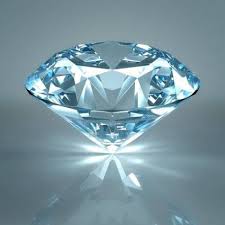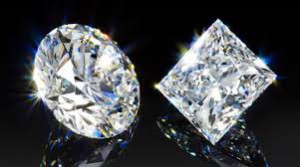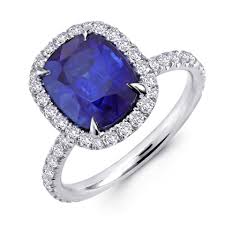
NYC Wholesale Diamonds is located at 47 West 47th Street Suite 3A in the New York City Diamond District. We offer our clients and referrals the opportunity to buy GIA, AGS and EGL Certified Ideal Cut Diamonds and state of the art fine jewelry at low wholesale prices sourced directly from Antwerp. The following is an article describing how China has become a major player at the source of the world’s diamond trade…Antwerp.
Large, affluent Chinese middle class has changed an age-old European business. Chu Xiao’s office is only 50 meters from Antwerp’s central railway station. Through a window, the Beijinger can see crowds of people from every corner of the world flowing in and out of the city every day. The scenery through that window hasn’t changed much in the past century, but the owner of this office changed three years ago from a Jewish businessman to a Chinese one.
Every morning, many Jewish people in their orthodox black robes gather along this street to trade diamonds, just as they have done for hundreds of years. When Chu, 30, decided to quit his job in a Shenzhen-based diamond company three years ago, he made the boldest decision of his life to open his own business in Antwerp. The Belgian city is the world’s main diamond trading center. Given its high share of the global trade, saying that the sparkling stones are an iconic facet of Antwerp’s reputation and image is no exaggeration. In the past decade in the city’s two diamond wholesale streets and four bourses – the most diamond bourses in any city in the world – more Indians and Chinese have been seen alongside the Jewish dealers. Seeing the potential demand in the Chinese market, Chu realized that he had to go to the city where most diamond transactions originate. However, setting up a business in Antwerp was harder than he imagined. When he arrived, almost all of the wholesale diamond traders were Jewish or Indian.
Diamonds and Antwerp have been intertwined for more than 550 years, and the Jewish community has dominated the diamond trade for much of that time. On one of the two trading streets there is a synagogue opposite the Antwerp World Diamond Center. Now, Indian companies control about 60 percent of the global trade in polished diamonds. Every morning, when the four bourses open, the narrow street where Chu works suddenly fills with people, and everyone seems to know each other. Many million dollars’ worth of deals can be made through a handshake or a greeting. On this street, trust is everything. Among these traders, you will see an intriguing assortment of business types: traditionally dressed Jews looking around alertly, many Indian businessmen carrying black briefcases and talking into their phones in loud, heavily accented English. This is no different from a busy commercial street in most parts of the world, except that many of the businessmen in this street carry small paper parcels in their suit pockets or briefcases. These small folded squares of pink or white paper are so thin and light that you would think there would be nothing inside them. However, once you open them you see the unmistakable sparkle of bright diamonds. Chu laughed when he saw my surprised face. “You a little disappointed to see such treasure wrapped so roughly? You’re holding $100,000 (75,840 euros),” he smiled.
According to AWDC, the industry-established foundation, each year about 130 million carats of diamonds are mined worldwide. Of those, 84 percent of all rough diamonds and 50 percent of all polished diamonds pass through Antwerp. Diamonds represent 5 percent of total Belgian exports and 15 percent of all Belgian exports outside the European Union, making diamonds the nation’s most important export product worldwide. Among the non-European markets, the largest destination for diamonds is China, which has become the new driving force of the old city of Antwerp.
“In the beginning, I got no recognition at the bourse,” Chu says. “Every day now, they greet me with ‘Hi, young Chinese man, you’re here.'” According to AWDC, the annual total value of global rough diamonds is nearly $9 billion. They are set in jewelry that is valued at nearly $50 billion. It also says that global supply is expected to decline, falling behind expected demand growth that will be driven by China, India and the United States. “Over the next 10 years, supply and demand are expected to grow at a compound annual rate of 2 percent and 5.1 percent.”
China’s rising middle class has changed Antwerp and the diamond industry over the past decade. In China, most customers don’t realize that almost every diamond on their jewelry passed through the city. About two years ago, China became the biggest destination for polished diamond exports from Antwerp, surpassing the US, says Ari Epstein, head of the AWDC.
The center’s research report says China will account for an estimated 29 percent of the global rough-diamond market’s growth through to 2023, as its middle class expands and the rural population moves into the cities. “Current projections suggest that the middle class will almost triple in size by 2023, and rough-diamond demand will more than double to about $5 billion that year in China,” Epstein says. Middle-class households currently make up only 19 percent of China’s population, but most forecasts say that percentage will rise to 44 percent by 2023.
“Diamond demand could accelerate if middle-class affluence grows faster,” Epstein says. “With more spending power, some consumers will likely buy more expensive diamond pieces.” Li Yan, the founder and owner of Silkroad Diamonds, was one of the first Chinese to become involved in the 1990s in Antwerp’s diamond business. She was a violinist in the city, and on an off chance some of her friends in China asked her to find a diamond wholesaler in Belgium. She took this new opportunity and ended up starting her own diamond business in 1996. Her office is now in one of Antwerp’s diamond bourses. When she opened her double security door for me, she was wearing a beautiful dress that combined the beauty of the East and West. “It’s from a local Antwerp brand,” she smiled, adding that its pattern reminds her of China. Li’s company was the official diamond partner of the Belgian EU Pavilion at Expo 2010 Shanghai. Li says that in the past Chinese consumers tended to buy diamonds under one carat, but recently younger people are starting to buy bigger stones. “Now, the Chinese market is a barometer of Antwerp’s diamond industry. If the demand from the Chinese market is not strong, the price will drop quickly,” Li says.
Not only are Chinese dealers aware of the importance of their home market, but Belgian companies have also begun to adapt to the new situation. Wang Tingting, a young Chinese woman who was hired by Dayekh diamond company last year, has been given the task of dealing with Chinese customers. According to Alexander Dayekh, the store was established by his father 10 years ago and mainly sold diamonds to Russian and US customers. But after he became involved in the family business, he began to explore the Chinese market. Now more than 60 percent of his customers are Chinese, which is why he hired Wang, the company’s first Chinese employee. The company’s diamond polisher, Edgar Gapamajian has worked in the industry for 12 years, and the biggest diamond he has polished in recent times was for a 24-year-old Chinese woman. “In the past, Russians were the ones who usually bought such big diamonds,” he says. This four-carat diamond was sold through a contact from Wang’s account with WeChat, a Chinese instant messaging service. “The Chinese buyer lives in London, and through my WeChat account I’ve sent her many pictures and chatted with her about our products,” Wang says. “Then she flew to Antwerp to visit us.”
The Belgian government and local associations are also paying a lot of attention to the Chinese market. Antwerp Vice-Mayor Ludo van Campenhout says that there are 1,850 registered diamond companies in Antwerp, and each year 38,000 Kimberley Process certificates are issued there. These certificates are granted to ensure that no diamonds are traded to finance unlawful rebel movements. “Therefore the city of Antwerp plays a role that is similar to that of New York in international banking and finance,” he says. “What New York is to the money markets, Antwerp is to the global diamond trade.” Diamonds are the main trading product for Russia, India and China, he says. According to Van Campenhout, China is the leading importer of polished diamonds from Antwerp. In 2012, 31.3 percent of Antwerp’s polished diamonds headed to China. “Export of diamonds, rough and polished, from Antwerp to China increased 73 percent in value between 2007 and 2012,” he says. “This share grew during the financial crisis and stabilized afterwards – not only because demand in general is rising, but also because of the Chinese interest in diamonds as an investment.”
Bart van Cauwenberge, who is responsible for the China desk at Antwerp Headquarters, which is the city’s official promotion and investment agency, says that AHQ’s focus on China will bring them once again to Guangzhou and Shenzhen this October to hold meetings with Chinese companies. “The city will have a more frequent presence and greater exposure in our sister city, Shanghai, the only diamond import and export portal in mainland China,” Van Cauwenberge says. As he walked through the security doors of one of Antwerp’s diamond bourses, Chu offered a more Chinese view of the international diamond trade. “To be frank, there are still very few Chinese companies in this city,” he says. “To compete with global companies, we need our voice to be heard more here.”




